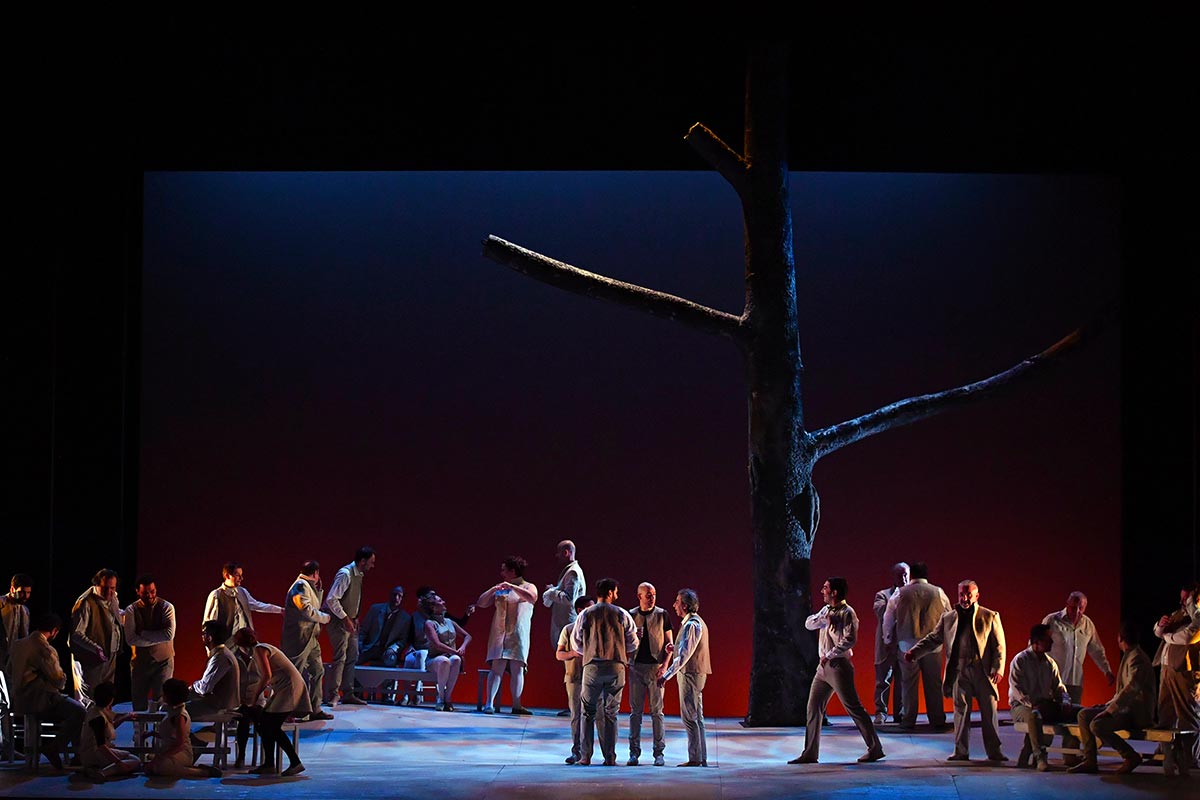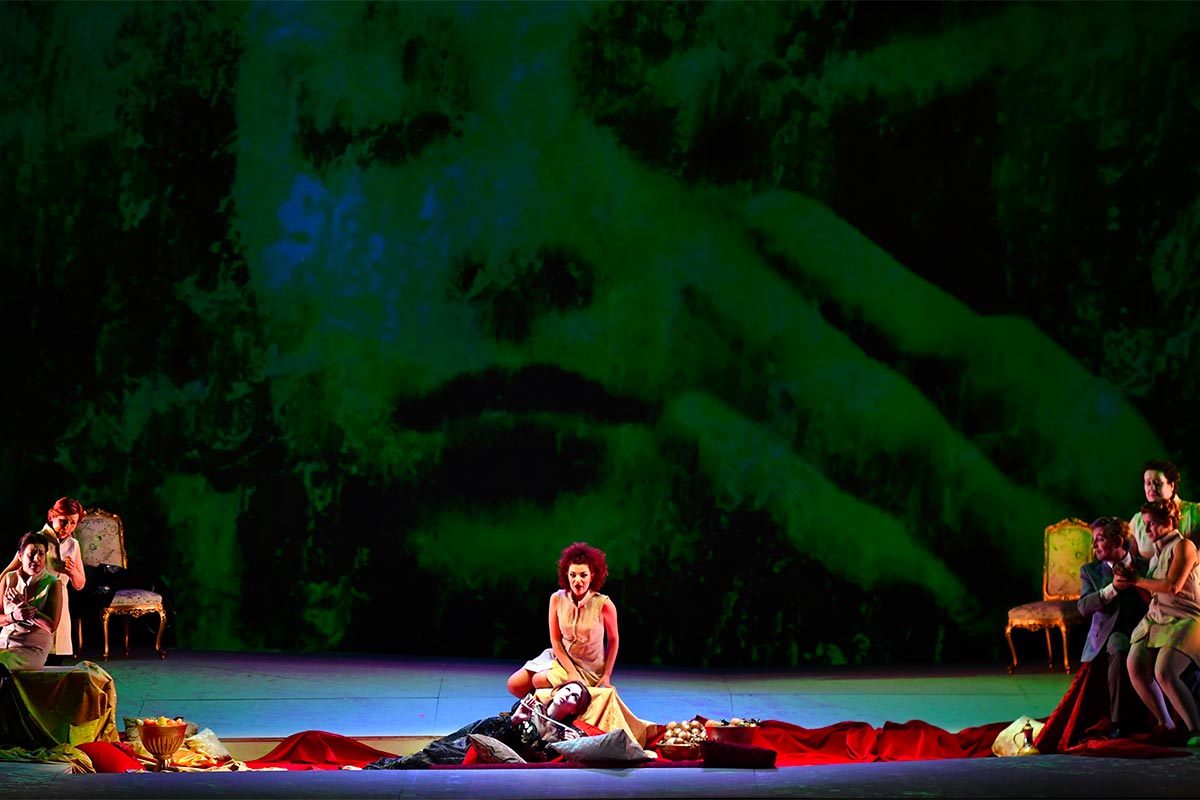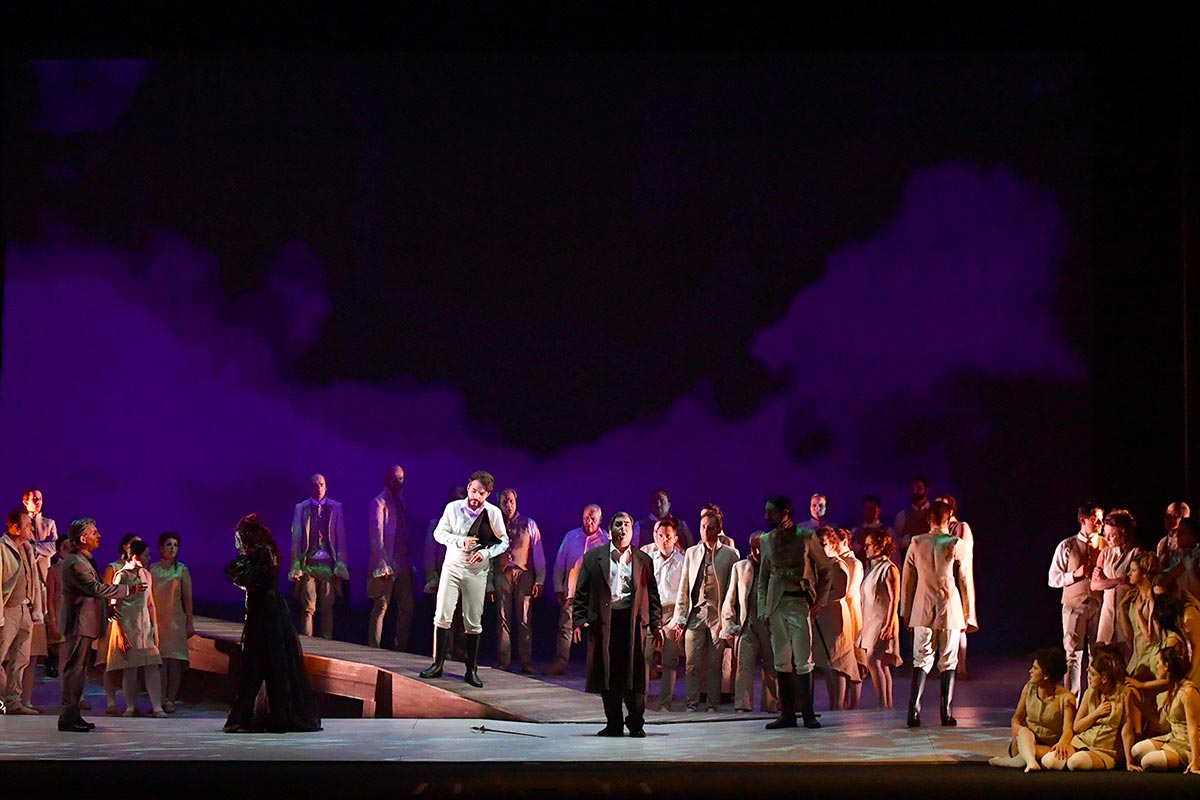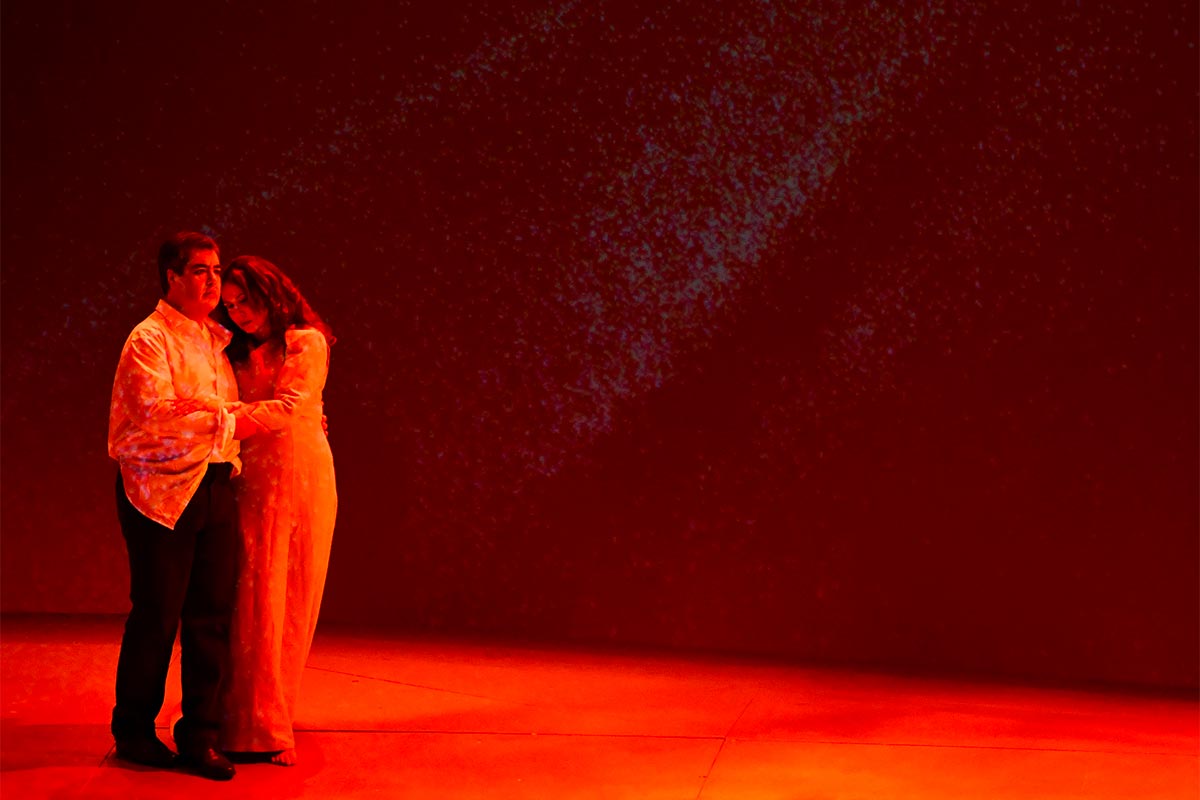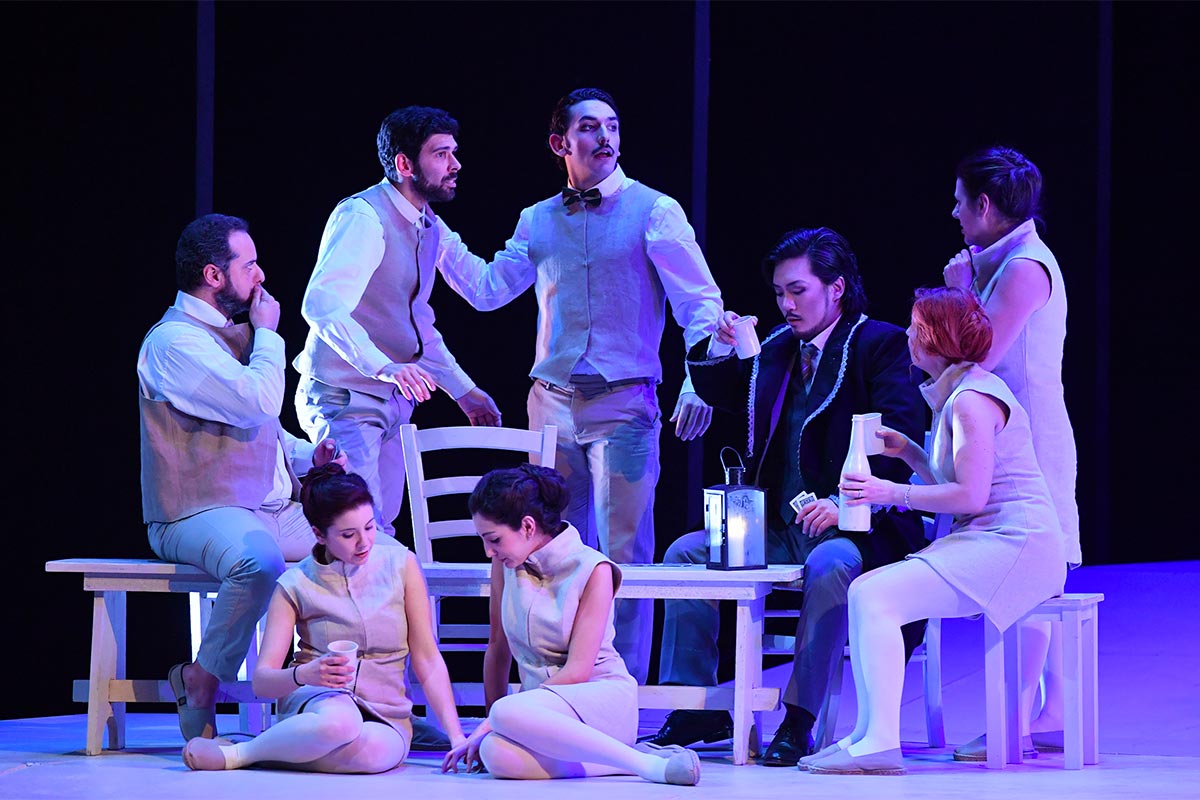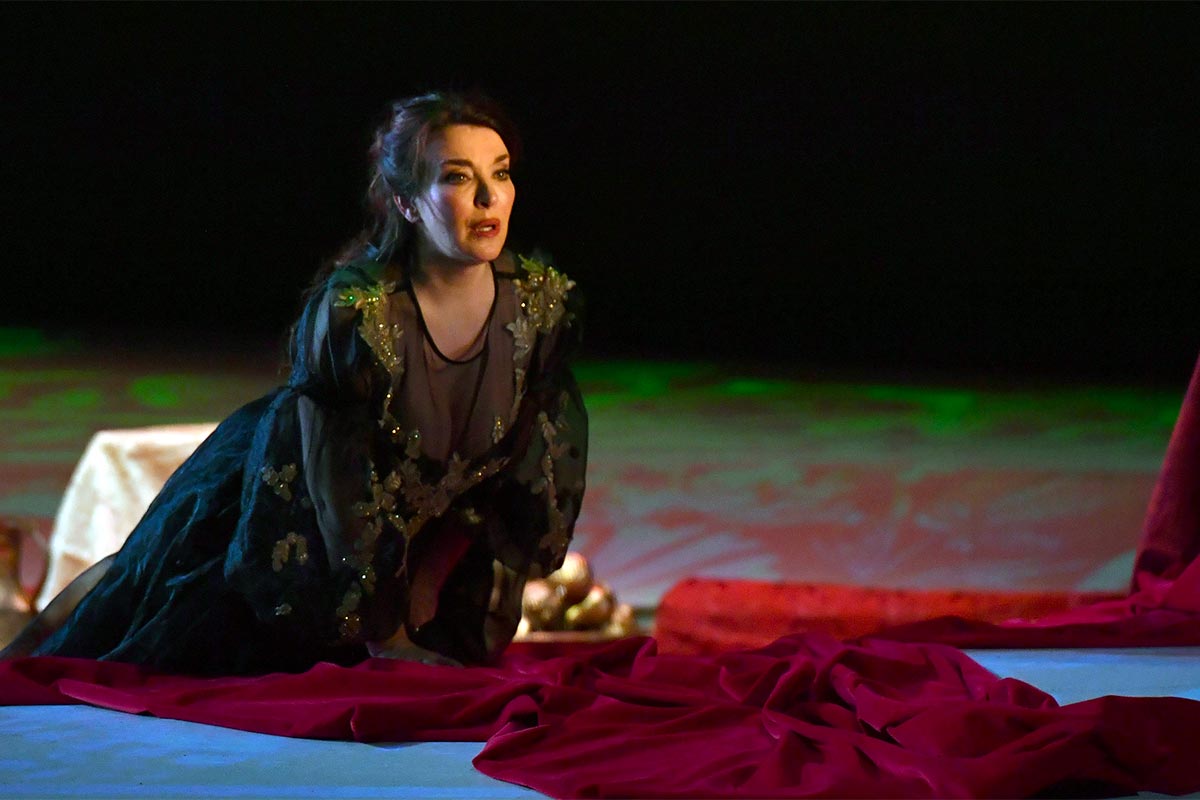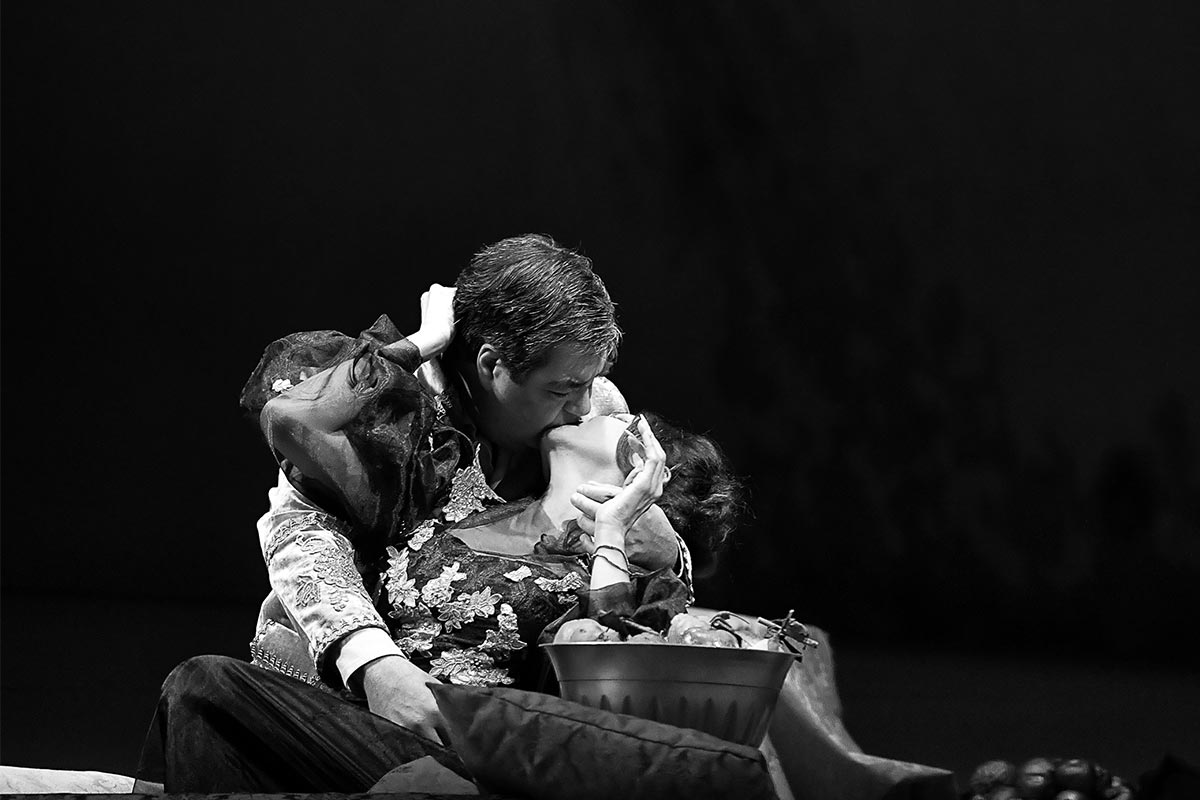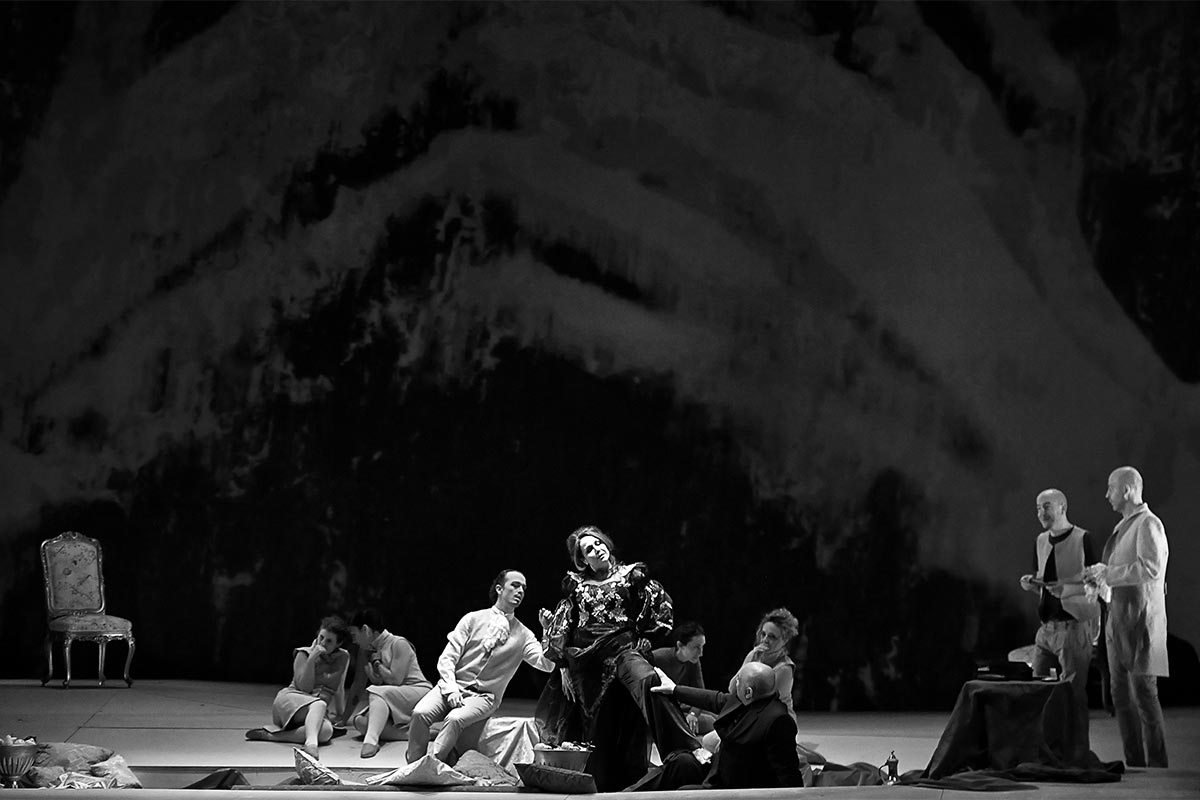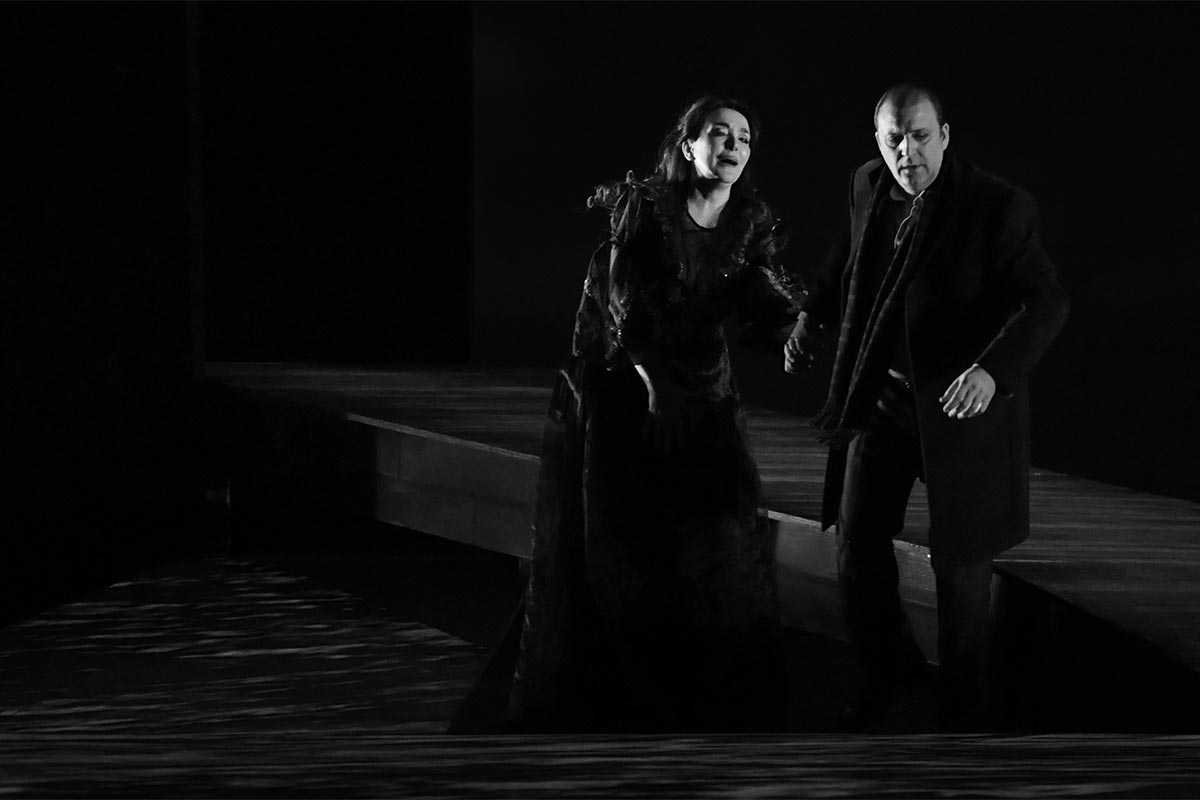Giacomo Puccini
Manon Lescaut
This new production of Manon Lescaut was born from the collaboration of three traditional Italian theaters: the Teatro Verdi of Pisa, the Teatro Sociale of Rovigo and the Teatro Goldoni of Livorno as the leading proponent.
In this production, which marks his debut in the title, Lev, in addition to directing, also designs the sets and costumes.
A distinctive feature of the production is undoubtedly the use of images and videos projected onto three different spatial planes, including an undulating slope representing the “desert” in its etymological meaning of abandonment, which in addition to distinguishing the different settings of the libretto provide a magnifying glass on the emotional experiences of the main characters of the opera.
cast

Alberto Veronesi

Beatrice Venezi

Rachele Stanisci

Donata D'Annunzio Lombardi

Ricardo Tamara

Danilo Formaggia

Sergio Bologna

Leon Kim

Giuseppe Raimondo

Didier Pieri

Lorena Zaccaria

Alessandro Ceccarini

Alessandro Martinello

Fabio Vannozzi
creators
Giacomo Puccini (1858–1924) was immensely popular in his own lifetime, and his mature works remain staples in the repertory of most of the world’s opera companies. Writing the libretto for Manon Lescaut was a laborious process: Domenico Oliva (1860–1917), a journalist and sometime politician, and novelist and playwright Marco Praga (1862–1929) provided much of the raw material. Puccini then turned to playwright Giuseppe Giacosa (1847–1906) and poet Luigi Illica (1857–1919) for revisions. Fellow (and eventual rival) composer Ruggero Leoncavallo (1857–1919) worked on the libretto at various points, and even Puccini’s publisher Giulio Ricordi (1840–1912) provided key tweaks. The source material was Antoine François Prévost’s (1697–1763) colorful novel L’Histoire du Chevalier des Grieux et de Manon Lescaut.

Giacomo Puccini
Stage director
Costume designer
set designer
lighting designer
producers
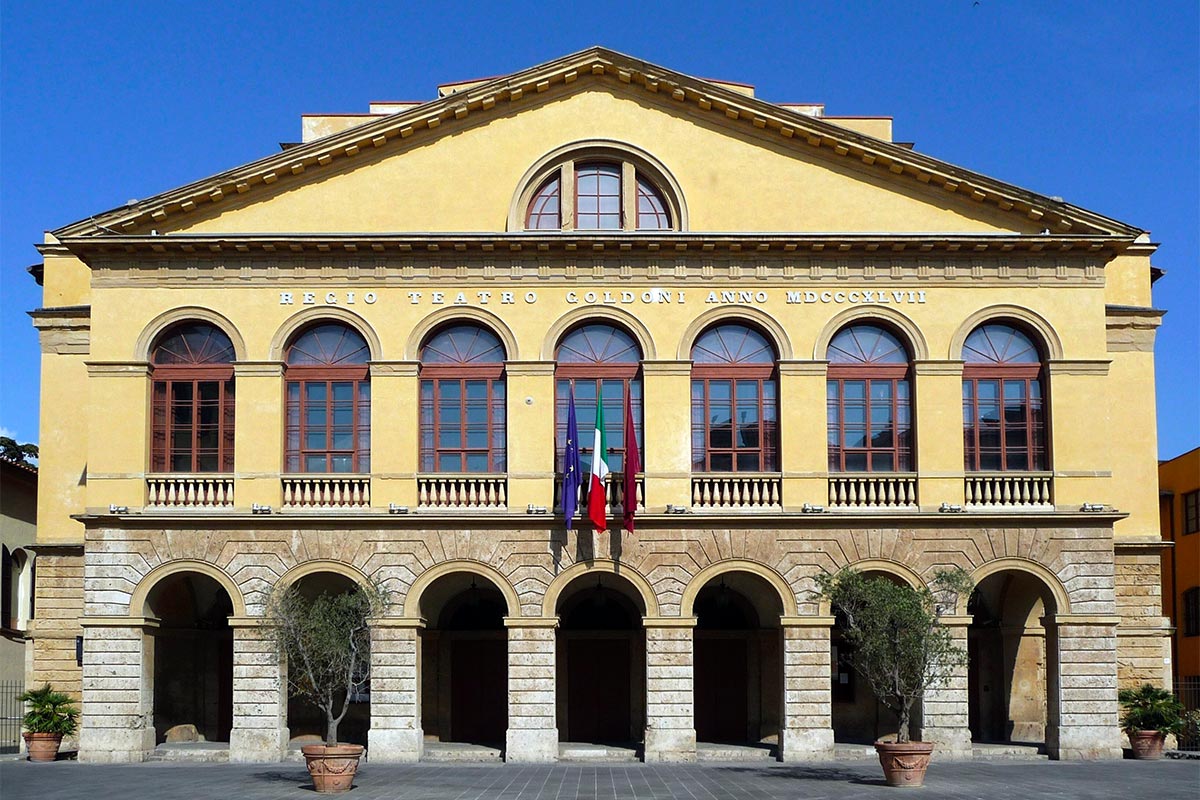
The Carlo Goldoni Theater is the most important theater in Livorno, the only large theatrical space survived the bombings of World War II and the speculation of the postwar period.
The theater was inaugurated on July 24, 1847 with the name of Leopold Theater, so called until the unification of Italy when it was named after Carlo Goldoni. .
A few years after the inauguration, the theater suffers a rapid decline and is restored in the years preceding the Unification of Italy, after some changes of ownership, in 1869 was purchased by the Academy Goldoni. Accomplice to the crisis of some city theaters, such as San Marco, these are the years that coincide with a series of shows with the best companies in the world, in particular, in 1890, with the representation of Cavalleria rusticana, the activity of the theater reaches the highest levels. In fact, the opera, by fellow citizen Pietro Mascagni, attracts to Livorno many personalities of the time, since then the theater becomes a reference point for the works of Mascagni.
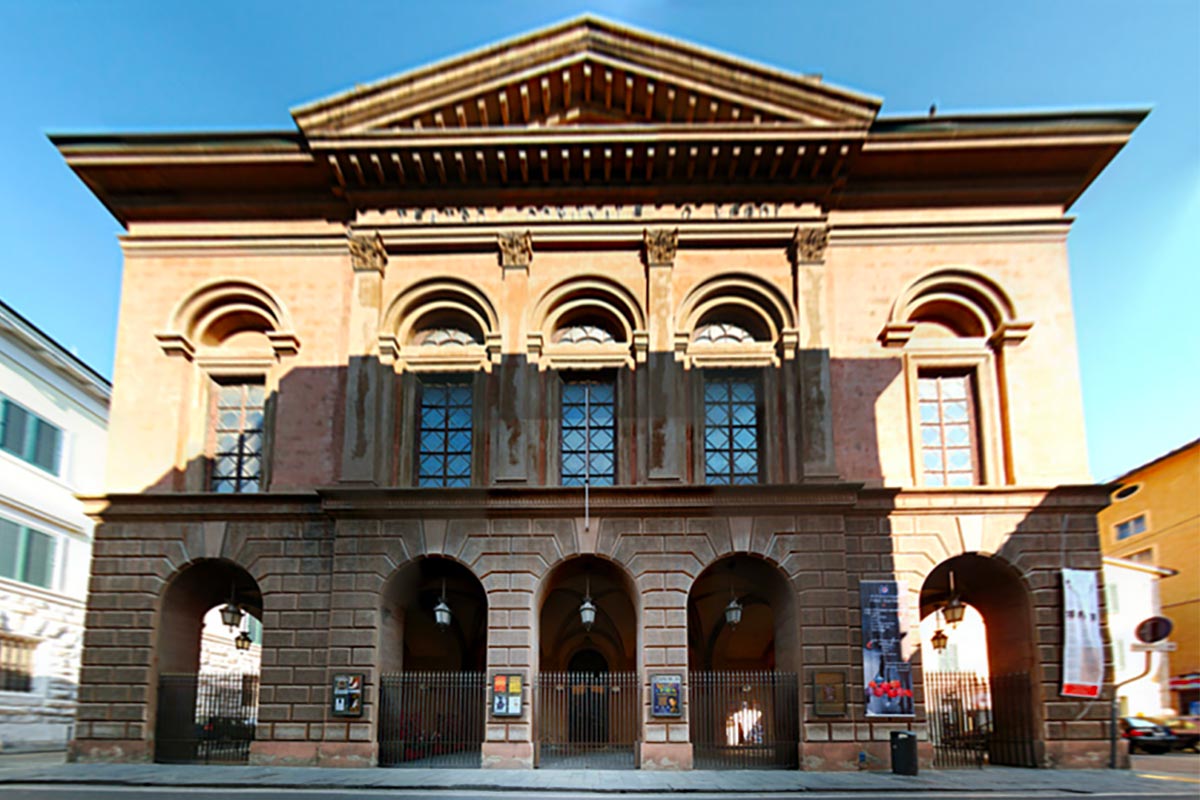
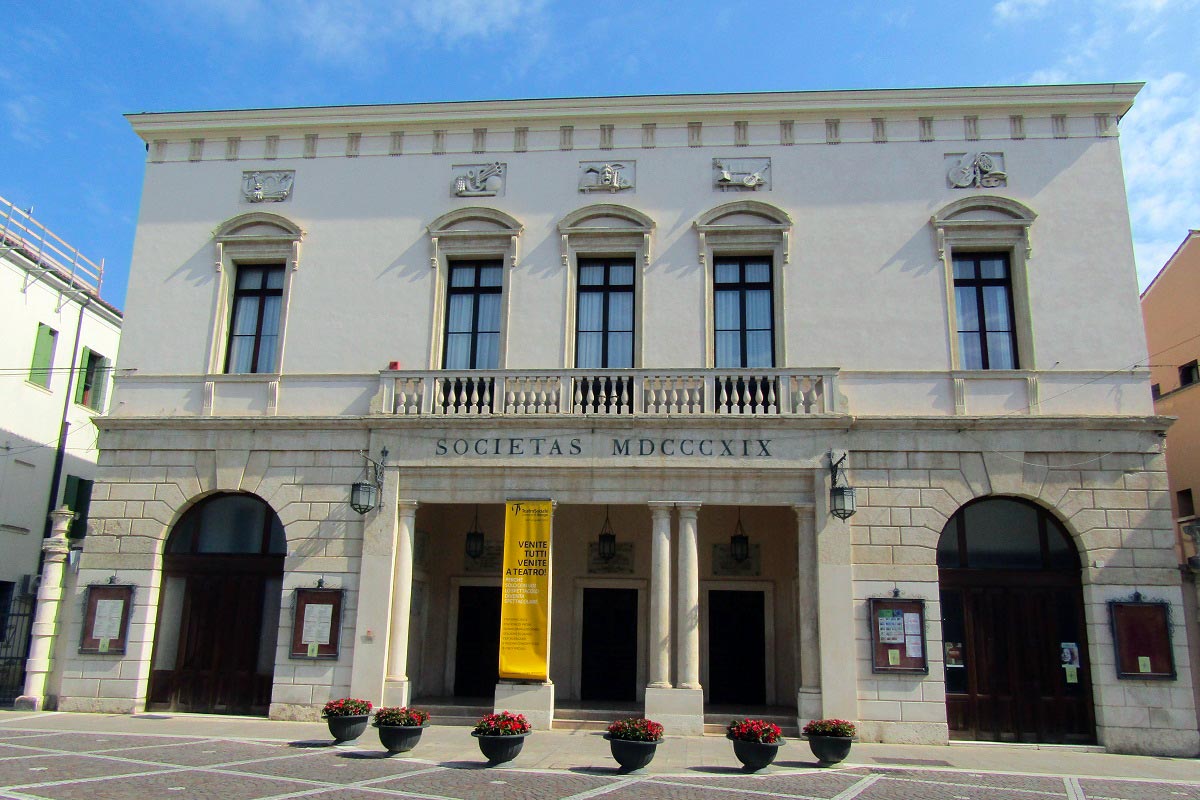
The Social Theater is an Italian opera house located in Rovigo overlooking Piazza Giuseppe Garibaldi. Designed by the Rovigo architect Sante Baseggio in neoclassical style, it was completed in 1819 and rebuilt on the original model in 1902 because of a fire.
Although it was used for the first time on March 3 of the same year, when Emperor Francis I of Austria was to be present for the performance of the opera “L’ombra di Fetonte”, the official inauguration took place the following month with Adelaide di Borgogna, written specifically for the event by Pietro Generali to a libretto by Luigi Romanelli, on April 26, 1819.
This theater saw, among others, the debut of Beniamino Gigli in Ponchielli’s La Gioconda in 1914, and the performance in 1944 of Renata Tebaldi in Mefistofele, of Maria Callas in the role of Aida in 1948 and of Luciano Pavarotti in 1962 in the role of the Duke of Mantua.
The Italian State, in 1967, included it among the Italian Tradition Theaters.
photos & videos
Tosca
Puccini’s Manon Lescaut
Teatro Goldoni Livorno, Teatro Verdi Pisa, Teatro Sociale Rovigo
notes
Destined for the convent, Manon yearns for life, yearns for freedom, and flees. It is the romantic Sehnsucht, the yearning towards something never attained, the search for something indefinite in the future, the ardent desire, the addiction to desire, the constant yearning that leads the human being not to be satisfied with what he reaches or possesses, but always pushes him towards new goals. The desire of desire, painful longing towards the unattainable, painful yearning that one feels in not being able to reach the object of desire. Therefore, the emptiness, the total lack: the desert. Desert, in its etymological meaning of abandonment “… which has no point of connection, that is, empty of everything”. The emptiness of the soul and the emptiness around it. Manon moves in a “black hole”, in an emptiness which fills up with contents and meanings during the whole opera but which returns to be a total void in the tragic finale.
Manon passes from the creation of a dream, from the illusion of filling the void with falling in love with Des Grieux, first and then with the opulence guaranteed by Geronte’s wealth, to the loss. She begins her journey into the unknown by walking along the dock of the port.
The last act is the unraveling of the dream. The lust for life has condemned her to death.
In a long flashback to the end of her life, Manon relives her own experience surrounded by a “faded” chorus of anonymous and insignificant individuals, uniformed by a costume that brings them closer to the image of mannequins rather than human beings. A world formed by an indistinct mass, in contrast with Manon’s most intense memories.

